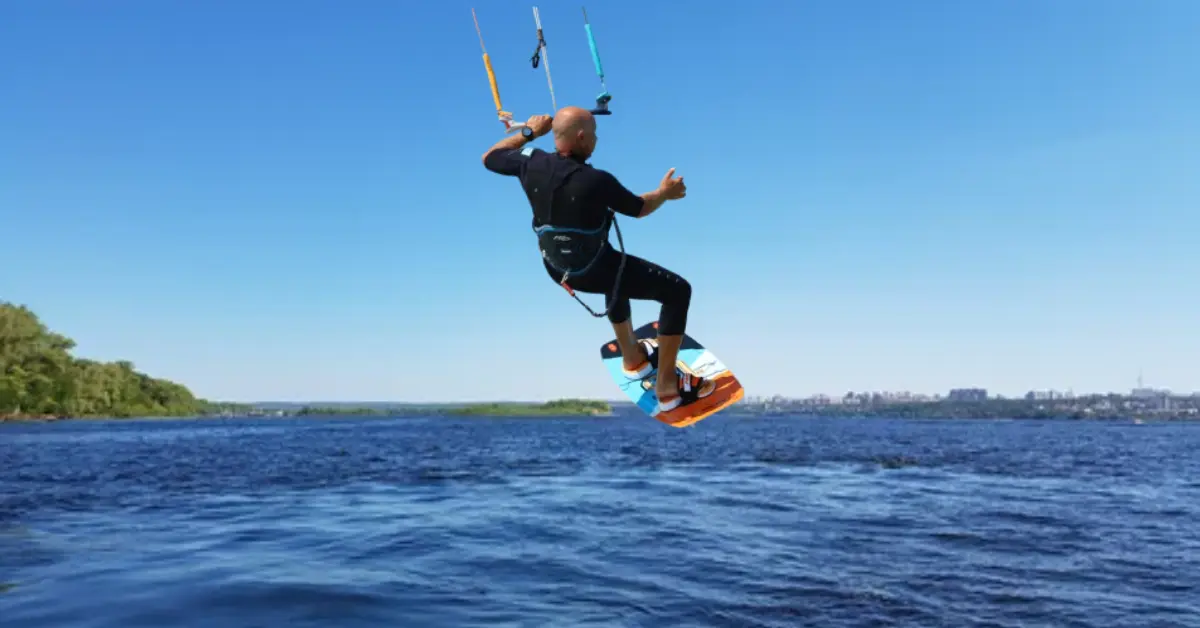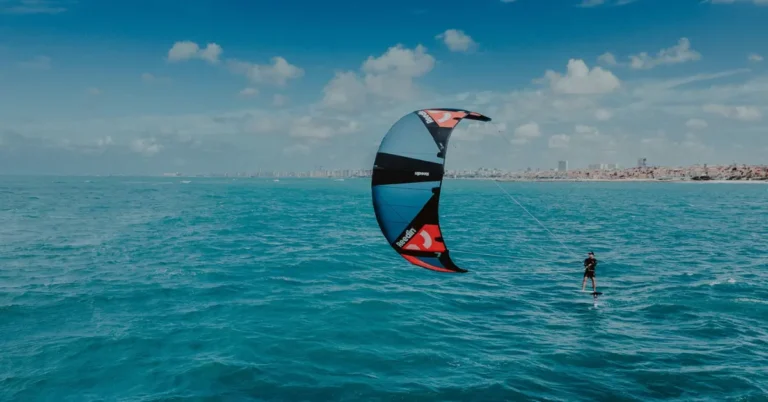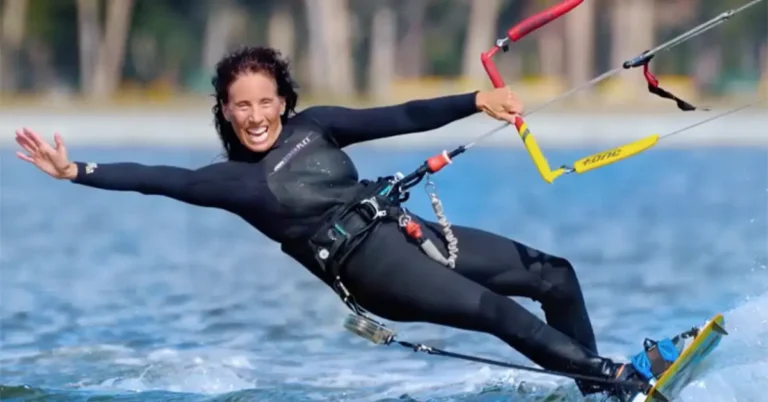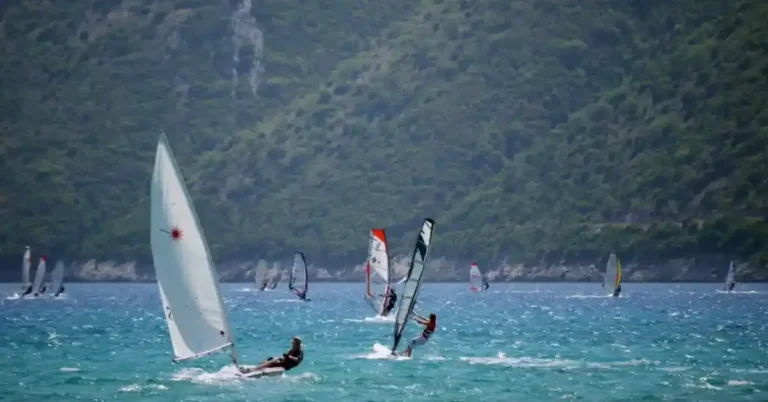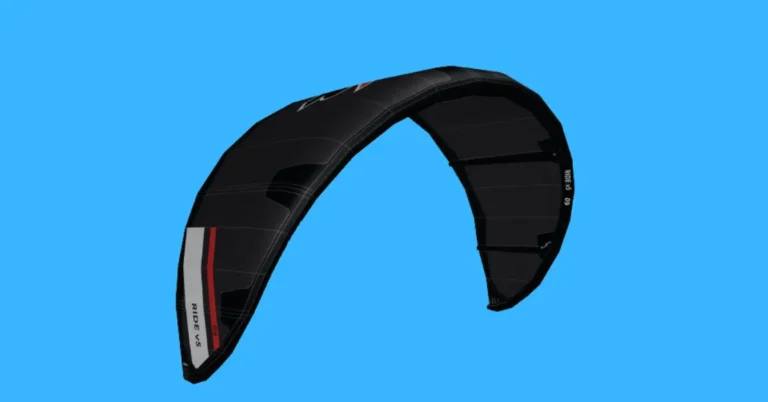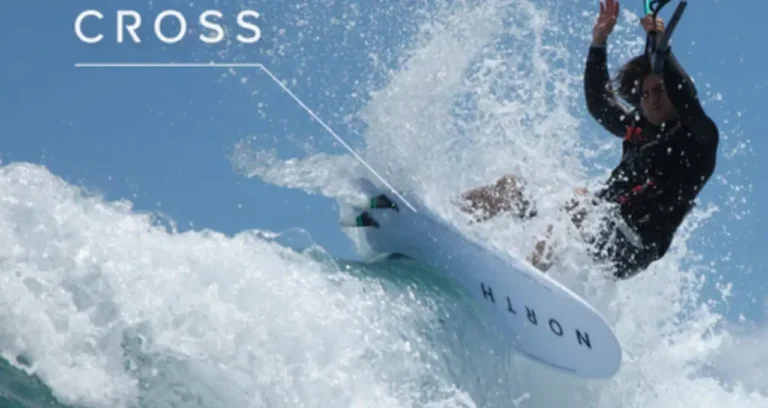How to Jump or Pop Kitesurfing
Jumping in kitesurfing is super exciting and lots of folks get into the sport just to soar high in the air. The key to jumping high is having a good pop, which means getting a strong push from the kite. To do a basic jump, start by riding comfortably and picking up some speed.
Then, steer your kite to either 11 or 1 o’clock, depending on your direction, and quickly switch its direction while pushing hard with your back foot. This helps lift you off the water. Remember, the faster and stronger your push, the higher you’ll go.
Once you’re in the air, hold onto the bar, lift your knees a bit, and wait until you’re almost back on the water before steering the kite back. When landing, position your board downwind and touch down with your back foot first. Ensure the kite is angled higher than 45 degrees for a smooth landing.
Also Read: How Fast Do Kitesurfers Go?
Jumping Basics
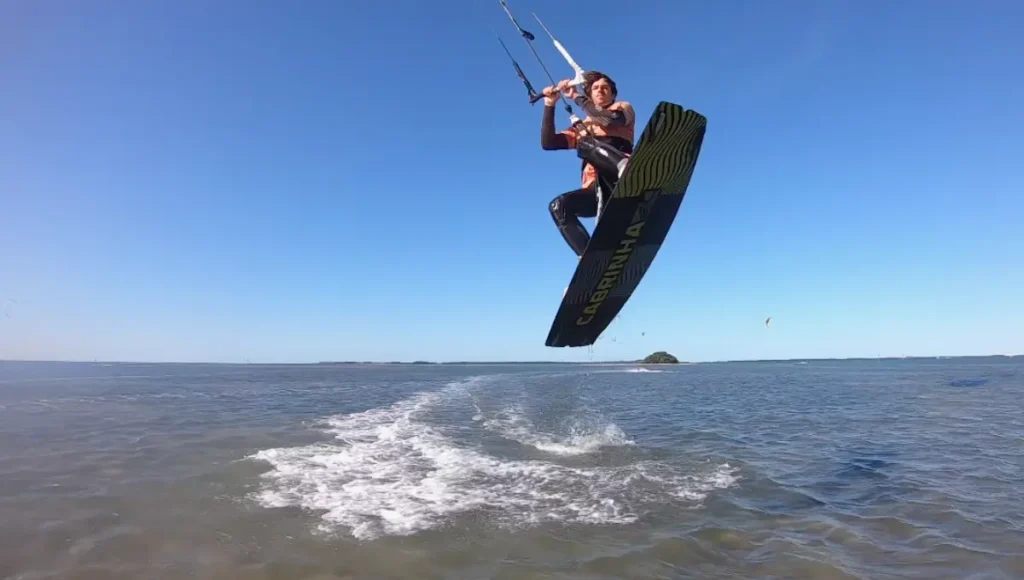
Jumping
Many of us got hooked on kitesurfing because of the thrill of jumping. No matter how skilled we become or how many tricks we learn, nothing beats the feeling of being airborne. From that split second of quiet suspension to the exhilarating moments of soaring high, jumping is unbeatable.
Once you’re comfortable cruising around on your board’s edge and can control your direction well, it’s time to start jumping. Just make sure you’ve mastered upwind body dragging first. While you might occasionally lose your board, it’s not safe to go without a leash.
Kite Basics
Before heading out into the water, let’s talk about what the kite needs to do. The kite’s job is to lift you off the water, ideally in a smooth elevator-like motion. To achieve this, the kite should move directly above you, around the noon mark. Start the kite around 11:15 or 12:45, not too low or too high.
While you control the kite, you also need to control its power. Start with a kite size you can handle. Too big, and it’ll be hard to control; too small, and it won’t generate enough power. Speed is good, but so is control, especially when you’re learning.
Using a big kite will take longer to turn, making it hard to hold your edge. And if you try to move the kite from low down to high up too quickly, you’ll lose control. Make sure your control bar is set up properly, or you won’t be able to edge well, and the kite will pull you downwind.
Body Basics
Apart from controlling the kite, your main goal is to keep the board’s edge firm as the kite moves. Throw the kite back and then edge as hard as you can. If you try to edge gradually before throwing the kite, you might stop.
When learning to jump, the key is to focus on your mindset. A big temptation is to peek at the kite as you send it back. But keep your head and shoulders over the board, not turning to watch the kite. Otherwise, your board will flatten, and the kite will go too far behind you. Let’s break down the jump into four stages to understand it better.
1. The Approach
Before attempting a jump, make sure you feel balanced and confident. Your approach should be comfortable, so ride happily on an edge with decent speed and kite power. Avoid edging too hard upwind, as it’ll slow you down too much. Make sure your kite is positioned no lower than 1 o’clock or 11 o’clock before you go for it.
This is your last chance to check it before you take off. Ensure you have enough space around you in case you drop the kite or get pulled downwind. Also, make sure the water is deep enough to fall into. These might seem obvious, but it’s easy to forget some basics when you’re pumped up and ready to go.
2. The Take-Off
This is your entryway to a whole new experience, and it might be surprising. First, send the kite back, then adjust your stance by exaggerating it. If your hands are at the ends of the bar, bring them closer together. You don’t need them right next to the chicken loop, halfway is good.
With your hands centered, you can steer the kite using both hands in a push-pull motion. The most crucial thing is not to try physically jumping off the water. Instead, resist strongly and wait, looking upwind, until the kite pulls you up. Don’t look directly at the kite. This is especially important if you’re using a bow kite; don’t let the bar pull away from you.
3. In-Flight Entertainment
Once you’re in the air, focus on getting balanced and steering the kite forward. It’s exciting to be up there, but there are important things to do. To ensure the kite responds well, pull the bar down towards your hips by bringing your hands closer together. This also helps move the kite above you, acting like a parachute. Bring your knees up to your hands to stay stable and avoid swinging off balance.
Try to anticipate where you’ll land and keep an eye on that spot. This helps you maintain your balance. On your first tries, if you manage to get airborne, steer the kite back above you, and gently land back in the water, you’ve succeeded in the hardest part.
4. The Landing
As you come back down, prepare to land by lowering your legs just before touching the water. To get extra power from the kite, pull on the front hand to dive it downward. This helps prevent sinking and gives you some pulling force.
For a better landing, aim to point the board downwind by twisting your front hip forward to follow the kite. If you don’t dive the kite, you’ll likely land sitting down. If you pull too gently, the kite will pull you off balance. The key is to dive the kite hard just before you hit the water.
The Two most important details on a kitesurfing jump or pop.
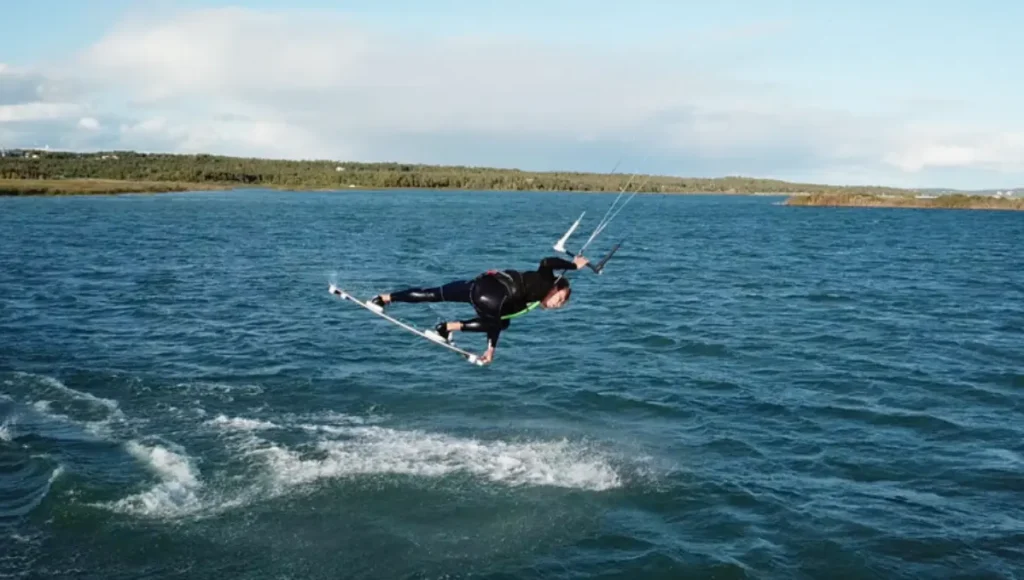
Timing the pop with kite movement
Timing is crucial when popping for a jump; it determines how high you’ll go. The key is to sync the movement of your kite and board perfectly. Aim to carve hard just as the kite is lifting you and crossing to the other side of the window.
The catapult effect for the pop
Consider the “catapult effect” for a stronger pop. This concept involves leaning towards the water before edging, which increases tension on the lines and water, giving you a higher launch. However, be careful not to lean too much and risk touching the water with your rear end.
Jumping without Kite Movement
Now let’s learn to jump without moving the kite, which is useful for wake-style tricks but a bit tougher. Unlike sending the kite, the kite won’t pull us up much but more downwind. We focus solely on the board.
The trick is to use the same board movement but put extra effort into it. Remember the catapult effect we talked about earlier? It’s crucial here too. So, lean towards the water before edging for a stronger pop, but be careful not to overdo it.
Unhooked Pop or Hooked in Pop
Let’s talk about jumping unhooked, which is handy for certain tricks. Unlike the previous jumps, here we won’t be using the kite to lift us. Unhooked jumps can be riskier if done while sending the kite high.
The main thing to remember is to adjust the bar slightly to balance the tension between the front and back lines. Test this on the beach to avoid any issues with the kite losing power mid-air.
When doing an unhooked jump, make sure to unhook just before you pop. If you unhook too early, you might tire out and lose control. This can make it hard to get a good pop off the water.
Common mistakes
There are many reasons why your jumps may not be going well. Here are some common ones:
To improve, avoid bending both legs or peeking at the kite, keep your kite at the right height, and maintain tension in the lines. Make sure to steer the kite properly and be aggressive with your back foot. When landing, focus on pointing the board downwind and using the front hand to dive the kite.
Frequently Asked Questions
Conclusion
A huge jump will impress your friends and family more than any fancy new trick. If you’ve been focusing on mastering new moves but your jumps still need work, take some time to improve your big air skills.
It’s a key skill to have and adds excitement to your kiteboarding repertoire. Plus, it’s best to practice big jumps when you’re feeling super powered up anyway. So, prioritize big air and enjoy soaring through the skies!
